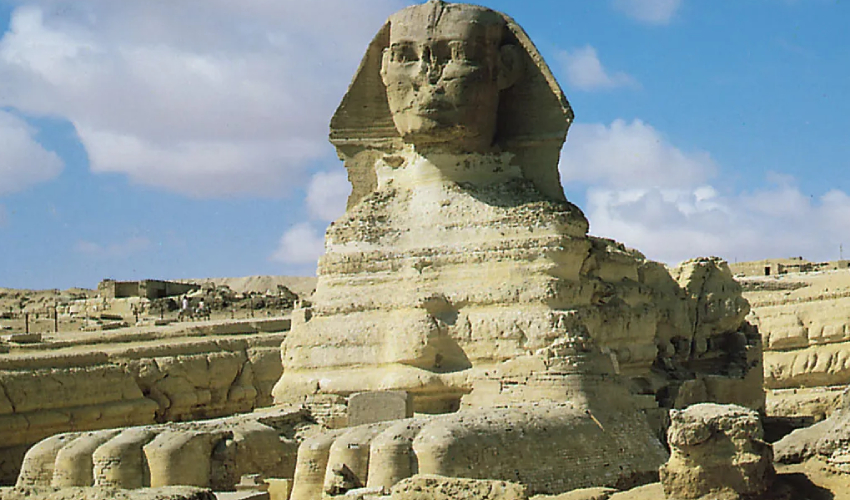American scientists believe they've solved the puzzle of how the Great Sphinx in Egypt, standing for over 4,500 years, was built. Instead of thinking it was carefully carved by stonemasons, researchers from New York University suggest that natural erosion might be responsible.
This means that the famous statue's features could be due to weathering.
The senior author of the study, Leif Ristroph, said, "Our findings could explain how Sphinx-like shapes can be formed by erosion."
This new idea proposes that nature itself played a role in shaping the iconic statue and might have inspired ancient Egyptians to make it.
Ristroph thinks their discovery helps us understand what people in ancient times saw in Egypt's deserts, inspiring them to create such a magnificent creature.
To test their theory, the research team looked at how wind affects unusual rock formations called "yardangs" in deserts.
They took mounds of soft clay with harder, less erodible material embedded inside to replicate the terrain in northeastern Egypt. They then washed these formations with a fast-flowing stream of water to act as the wind.
In their experiment, the New York University team found that the clay formations slowly began to look like a Sphinx shape, which was later detailed by humans.
Their experiment resulted in shapes like a lion's head, a carved neck, paws laid in front, and an arched back, confirming their idea.
Incredibly, they also discovered yardangs today that look like sitting or lying animals, supporting their conclusions.
This research can be important for geologists because it shows that various factors impact rock formations.
Rocks are not all the same; they have different compositions. The unusual shapes that appear are because of how the wind or water interacts with the harder parts.
The researchers also said that their experiment tested a theory first proposed in 1981 by geologist Farouk El-Baz. He suggested that the Great Sphinx was made by wind slowly wearing away the sand.



























